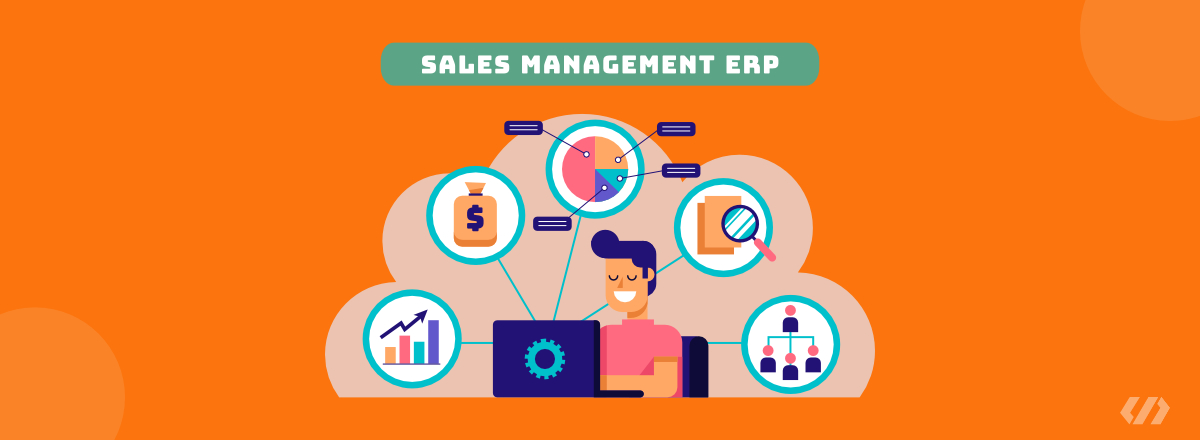Sales Management ERP
Industry
Sales
Platform
Web and Mobile App
Country
India
Partnership Period
Feb 2020 to Present
Team Size
5 Experts
Overview
This document presents a detailed use case for robust sales management software. This software is designed to streamline sales processes, enhance lead management, and monitor employee performance. The software is equipped with a user-friendly mobile application interface and offers seamless integration capabilities with external ERP systems such as Oracle and SAP.
Key Stakeholders involved
- Sales Engineer (Employee): The primary user who interacts with the customers and uses the application for sales and lead management.
- Sales Head (Supervisor): The person who oversees the sales process, monitors the performance of the sales engineers, and uses the application for reporting and tracking purposes.
- Admin: The person who manages the system, populates master data, and uses the application for monitoring and reporting purposes.

Preconditions
- The sales engineer authenticates the mobile application, ensuring secure access to sensitive data.
- The system administrator has populated the master data with requisite customer and product information, ensuring accurate and consistent data for sales processes.
Main Flow
- The sales engineer initiates a sales offer by selecting a customer and requisite items from the pre-populated master data. This ensures that the offer is tailored to the customer’s needs and preferences.
- The sales offer is presented to the customer for approval. This step involves a detailed presentation of the offer, addressing any queries or concerns the customer may have.
- Upon customer approval, the sales offer is transitioned into a sales order. This marks the formal acceptance of the offer by the customer.
- The application logs the sales engineer’s location during this process for performance monitoring and validation. This helps in tracking the sales engineer’s activities and ensuring compliance with sales protocols.
Alternative Flows
- The sales engineer identifies a lead and records it in the application. This involves capturing detailed information about the lead, including contact details, preferences, and potential sales opportunities.
- The lead can be transitioned through various stages: potential, proposal, purchase order (PO), advance, order acceptance, and installation, with each stage capturing relevant details. This provides a structured approach to lead management and ensures that no opportunities are missed.
Technology used
- React and React Native for frontend
- Python for backend
Post Conditions
- A sales order is generated and archived in the system. This serves as a formal record of the sales and can be used for future reference and reporting.
- The sales engineer’s location is logged for performance monitoring. This data can be used to analyze the sales engineer’s performance and identify areas for improvement.
Business Impact
- Streamlined sales processes: The software simplifies and automates various sales processes, reducing manual effort and increasing efficiency.
- Enhanced lead management: The software provides a structured approach to lead management, ensuring that no opportunities are missed.
- Improved employee performance tracking: The software provides detailed tracking of employee activities, helping to monitor performance and identify areas for improvement.
Related Use Cases
- Sales engineer records travel expense report: This allows for accurate tracking of travel expenses and facilitates reimbursement.
- Sales engineer submits sales visit report: This provides a record of sales visits and helps in tracking sales activities.
- System administrator accesses sales performance, order histories, and other reports: This provides valuable insights into sales performance and helps in decision-making.
- A sales engineer records a to-do list in the application: This helps in managing tasks and ensuring that all important activities are completed on time.
- System administrator accesses employee login report: This helps in monitoring employee activities and ensuring compliance with company policies.
Assumptions
- The application maintains a stable internet connection, ensuring uninterrupted access to the system.
- The application is compatible with the sales engineer’s mobile device, ensuring a smooth and user-friendly experience.
Future Considerations
- Potential integration with additional external ERP systems: This would expand the software’s capabilities and provide more flexibility in managing sales data.
- Advanced data analytics for sales performance: This would provide deeper insights into sales performance and help in identifying trends and opportunities for improvement.
Conclusion
This use case provides a detailed and comprehensive overview of the sales management software, highlighting its capabilities in streamlining sales processes, managing leads, and monitoring employee performance. It underscores the roles of different stakeholders and the sequence of activities within the system, providing a clear understanding of how the software operates and the value it provides to the organization.